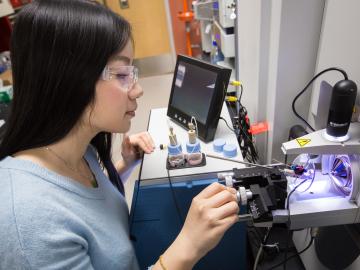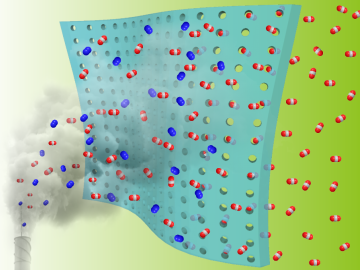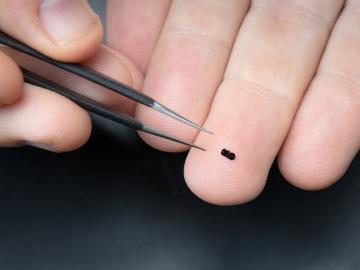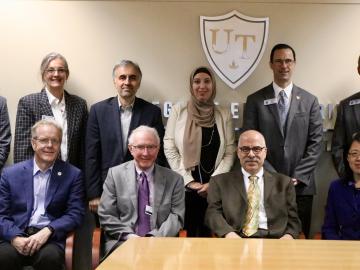
Filter News
Area of Research
- (-) Materials (60)
- Advanced Manufacturing (2)
- Biology and Environment (55)
- Electricity and Smart Grid (1)
- Energy Science (67)
- Functional Materials for Energy (1)
- Fusion and Fission (4)
- Isotopes (1)
- Materials for Computing (4)
- National Security (7)
- Neutron Science (14)
- Nuclear Science and Technology (4)
- Supercomputing (21)
News Type
News Topics
- (-) Bioenergy (9)
- (-) Composites (3)
- (-) Environment (9)
- (-) Microscopy (17)
- (-) Partnerships (9)
- (-) Physics (19)
- 3-D Printing/Advanced Manufacturing (13)
- Advanced Reactors (2)
- Artificial Intelligence (5)
- Biology (4)
- Biomedical (3)
- Buildings (3)
- Chemical Sciences (22)
- Computer Science (8)
- Coronavirus (2)
- Critical Materials (8)
- Cybersecurity (3)
- Energy Storage (21)
- Exascale Computing (1)
- Frontier (3)
- Fusion (3)
- Grid (3)
- High-Performance Computing (3)
- Irradiation (1)
- Isotopes (5)
- ITER (1)
- Machine Learning (3)
- Materials (46)
- Materials Science (43)
- Molten Salt (2)
- Nanotechnology (25)
- National Security (3)
- Neutron Science (21)
- Nuclear Energy (5)
- Polymers (8)
- Quantum Computing (2)
- Quantum Science (10)
- Security (1)
- Simulation (1)
- Summit (1)
- Transportation (5)
Media Contacts

Scientists at Oak Ridge National Laboratory and Ohio State University discovered a new microbial pathway that produces ethylene, providing a potential avenue for biomanufacturing a common component of plastics, adhesives, coolants and other

Five researchers at the Department of Energy’s Oak Ridge National Laboratory have been named ORNL Corporate Fellows in recognition of significant career accomplishments and continued leadership in their scientific fields.

Researchers at the Department of Energy’s Oak Ridge National Laboratory and the University of Tennessee, Knoxville, are advancing gas membrane materials to expand practical technology options for reducing industrial carbon emissions.

In the search to create materials that can withstand extreme radiation, Yanwen Zhang, a researcher at the Department of Energy’s Oak Ridge National Laboratory, says that materials scientists must think outside the box.

Energy storage startup SPARKZ Inc. has exclusively licensed five battery technologies from the Department of Energy’s Oak Ridge National Laboratory designed to eliminate cobalt metal in lithium-ion batteries. The advancement is aimed at accelerating the production of electric vehicles and energy storage solutions for the power grid.

Liam Collins was drawn to study physics to understand “hidden things” and honed his expertise in microscopy so that he could bring them to light.

Researchers at the Department of Energy’s Oak Ridge National Laboratory have received five 2019 R&D 100 Awards, increasing the lab’s total to 221 since the award’s inception in 1963.

ORNL and The University of Toledo have entered into a memorandum of understanding for collaborative research.

Quanex Building Products has signed a non-exclusive agreement to license a method to produce insulating material from ORNL. The low-cost material can be used as an additive to increase thermal insulation performance and improve energy efficiency when applied to a variety of building products.

OAK RIDGE, Tenn., March 22, 2019 – Karren Leslie More, a researcher at the Department of Energy’s Oak Ridge National Laboratory, has been elected fellow of the Microscopy Society of America (MSA) professional organization.


